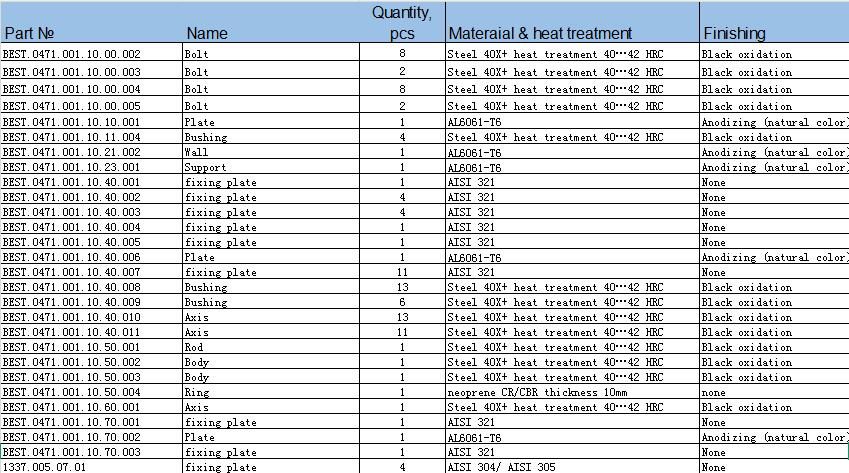A Bill of Materials (BOM) is a comprehensive list that outlines the raw materials, components, sub-assemblies, parts, and quantities required to manufacture a product. It serves as a blueprint for manufacturers, guiding the production process and ensuring that all necessary materials are available at the right time. The BOM is an essential document for anyone involved in the production or assembly of a product, from engineers and designers to procurement teams and production managers.
Introduction to Bill of Materials
The Bill of Materials (BOM) is a critical document in both manufacturing and engineering, serving as a recipe for building a product. It provides detailed information about the materials, components, and parts needed to complete a product, along with their respective quantities, specifications, and sometimes even supplier details. The BOM can be used in various industries, including manufacturing, electronics, automotive, and consumer goods, and is crucial for product development and production management.
There are different types of BOMs, such as:
Single-Level BOM: A simple BOM listing the components required for an individual assembly or sub-assembly.
Multi-Level BOM: A more complex structure, displaying the entire hierarchy of components, sub-assemblies, and raw materials required for the finished product.
Engineering BOM (EBOM): Created during the design phase, detailing the components that the design team considers necessary.
Manufacturing BOM (MBOM): Used during production, showing how parts should be assembled and the necessary processes involved.
Sales BOM: Used for customer-facing products, often including packaged or assembled units.
Usages of a Bill of Materials
The Bill of Materials serves multiple functions across different stages of product development and manufacturing:
Product Design and Engineering
The BOM acts as a detailed list of all parts and components, allowing designers and engineers to ensure that every element required for the product is accounted for. It helps avoid the omission of crucial components during the design phase.
Engineering teams also use the BOM to assess material requirements, understand assembly needs, and evaluate potential cost-saving alternatives.

Procurement and Inventory Management
Procurement teams use the BOM to source raw materials and components from suppliers, ensuring that all necessary items are purchased in the correct quantities and specifications.
It is also crucial for inventory management, helping to track the availability of materials and ensuring that production doesn’t face delays due to material shortages.
Manufacturing and Assembly
In manufacturing, the BOM is used to guide assembly lines and production teams, ensuring that the right materials are used in the correct quantities at each stage of the process.
It simplifies the assembly process by providing clear instructions on what parts are required and when, ensuring efficiency and reducing errors.
Cost Estimation and Budgeting
The BOM is vital for accurate cost estimation. By listing all materials and their quantities, it helps in determining the overall cost of production, which can be used for pricing products and managing budgets.
Manufacturing companies can analyze material costs, labor costs, and overheads more effectively by using the BOM as a reference.
Product Lifecycle Management
The BOM plays an essential role throughout the product lifecycle, supporting product tracking, maintenance, and upgrades. It helps in managing design changes and product revisions, making it easier to update parts and materials in future production runs.
Quality Control and Compliance
The BOM provides a detailed reference that ensures all components meet the required standards and specifications. This is essential for quality control and ensuring that the finished product meets regulatory compliance standards, especially in industries like aerospace, automotive, and medical devices.
Benefits of a Bill of Materials
Improved Communication and Coordination
A BOM standardizes the information shared between departments (design, procurement, manufacturing, etc.), reducing miscommunication and ensuring everyone is on the same page. It also helps align different teams around a single version of the truth, which is vital for the efficiency of the manufacturing process.
Enhanced Efficiency in Production
By listing every required component and material, a BOM prevents delays and production bottlenecks. Production teams can quickly identify what is needed at each stage of the manufacturing process, streamlining the workflow and minimizing downtime.
It also helps avoid overproduction or underproduction by providing accurate material quantities.
Cost Control and Cost Reduction
The BOM allows companies to assess the cost of raw materials and components upfront, ensuring that production remains within budget. It helps identify potential cost-saving opportunities, such as material substitutions, bulk purchasing, or optimizing assembly processes.
It also minimizes wastage by tracking material usage and ensuring that excess inventory is not accumulated.
Error Reduction and Quality Assurance
The BOM ensures that all the right materials are available for assembly, reducing the risk of using incorrect parts or materials. This results in fewer errors during the production process and leads to higher quality products.
It also simplifies troubleshooting, as each part used in the product is listed with its specific part number, material specification, and supplier information.
Scalability and Future Production Runs
As demand for a product grows, the BOM facilitates scalability by enabling a smooth transition from small-batch production to mass production. The BOM ensures that all components are available in sufficient quantities and that production processes can be scaled up effectively without compromising quality.
Better Supply Chain Management
The BOM helps optimize the supply chain by allowing procurement teams to identify long lead-time items early and manage supplier relationships efficiently. This proactive approach minimizes production delays caused by material shortages or supply chain disruptions.
Regulatory Compliance and Documentation
For industries that require adherence to strict regulations, such as aerospace, automotive, and medical devices, the BOM ensures that all materials and components used are documented, compliant, and traceable. This documentation is crucial for audits, quality certifications, and regulatory inspections.
Conclusion
The Bill of Materials (BOM) is an indispensable tool in the manufacturing process, offering both operational and strategic advantages. From improving communication between departments to reducing errors, controlling costs, and ensuring quality, the BOM is a key driver of efficiency. Whether in product design, procurement, or production, having a well-organized and up-to-date BOM ensures that all aspects of manufacturing run smoothly, ultimately enhancing productivity and reducing costs.
By leveraging the power of a BOM, manufacturers can streamline their processes, optimize resources, and produce high-quality products that meet customer expectations and regulatory standards. As such, the BOM is not just a list of materials but a cornerstone of modern manufacturing efficiency.



